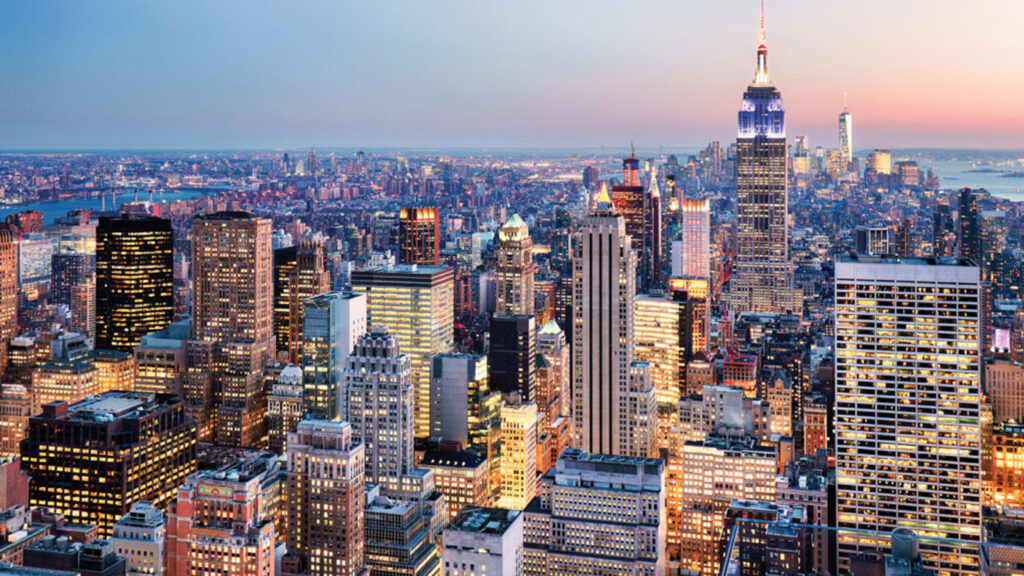- Overall real estate volume of $77.5 billion was down 64% from last year’s record second quarter.
- Compared to pre-pandemic second quarters, though, volume is down only half as much.
- Monthly volume has increased in consecutive months, indicating investment sales may have found a bottom.
- Multifamily leads in total volume but also with the largest year-over-year volume decline.
- A few markets showed year-over-year volume increases at the asset-class level.
Second quarter sales volume was limited and the lowest quarterly total since 2020 Q3. Headline volume declines look significant, and they are, but context is important. Second quarter volume set a record last year. Further, compared to average second quarter sales volume from 2014–2019, volume remains down, but just by 32%. Positive indicators include growth in both listings and monthly volume in consecutive quarters, which bodes well for future sales readings.
Office
Office sales continue to be weak. At $12.5 billion, volume is akin to after the financial crisis. It picked up slightly from Q1, as it began to shift between CBDs and suburbs. CBD volume surged by 66% in the quarter, thanks to the sales of 245 Park Avenue and One Liberty Plaza in Manhattan. Looking at sales in the first half of the year in the top 25 markets, only Tampa’s increased, by 32% thanks to several mid-market sales, over this time last year. Tampa is now in 16th place for sales volume, from 30th one year ago. Northern Virginia volume was broadly flat but moved up to 4th place from 15th.
Industrial
Industrial sales topped office and retail volume combined in Q2. In many ways industrial volume is back to normal, about 4% higher in Q2 than from 2015–2019, when average quarterly volume was $21.4 billion. Still-strong fundamentals and stellar mark-to-market rent upside continue to attract investors. The recent Prologis/Blackstone trade indicates that portfolios of scale can trade, and more large offerings are on the market. In the top 25 sales markets, Greenville, SC, sales volume was the strongest, just 7% below last year’s.
Multifamily
While the multifamily market’s sales volume had the largest decline in the major asset classes, there are some bright spots for individual markets. In San Francisco and San Jose, which dropped out of the top 25 markets in 2022, sales grew 65% and 138%, respectively. San Francisco volume shot up to 12th year-to-date, from 53rd in 2022 and 57th in 2021. Washington, D.C., volume also had a strong revival, up 64%, reaching 20th place after it fell to 52nd and 69th place in the previous two years.
Retail
Retail investment sales volume remains muted at $9.5 billion in Q2. After a boost in sales in Q1 from a large privatization deal, retail volume fell, unlike that for office, industrial, and multifamily, which posted quarter-over-quarter growth. San Antonio’s volume growth was the strongest, up 5% over last year’s, and is 15th in total volume, a big jump from its 2022 rank of 39th. Northern New Jersey volume also grew, by 4%, and it finished the first half in 6th place, from 19th last year.
Hospitality
Hospitality sales volume, at $5 billion, is 58% lower than last year’s, and as happened for retail, volume declined from Q1’s. However, compared to other real estate classes, hospitality has the highest number of markets with year-over-year sales gains through midyear. Fort Lauderdale moved up to first place from 21st last year, with overall volume up 125%. New York City’s Boroughs’ volume grew 117%, moving it up from 36th to 8th place, while Northern New Jersey and East Bay volume grew 11% and 32%, respectively. In Tucson, AZ, volume growth of 328% was the strongest and vaulted it to 16th place from last year’s 82nd.

 Aaron Jodka
Aaron Jodka


 Nicole Larson
Nicole Larson
